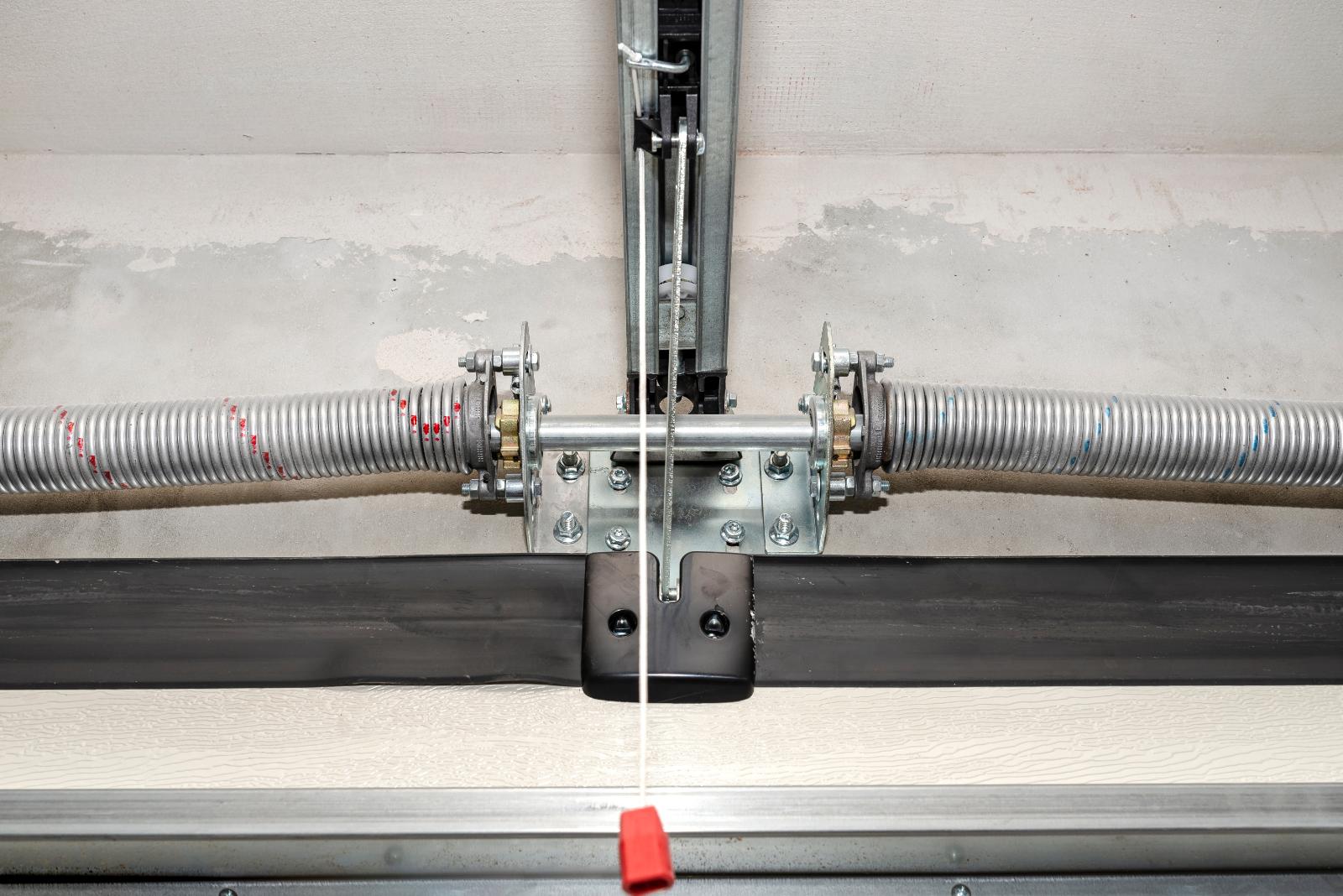
Contents
When it comes to installing an overhead door, attention to detail is key. You’ll need to start with accurate measurements and a clear workspace to guarantee a smooth process. Gathering the right tools and materials will set the foundation for success. Proper alignment of the track system is critical, as it impacts the door’s operation. Let’s explore the essential techniques that will help you achieve a professional installation.
Key Takeaways
- Ensure accurate measurements of the door opening to accommodate the new door properly and avoid installation issues.
- Clear the workspace of clutter and organize tools and materials for a smooth installation process.
- Use a level to confirm each door section’s alignment during installation for optimal functionality and appearance.
- Test the door’s operation and safety features thoroughly after installation to ensure reliability and compliance with safety standards.
- Schedule regular maintenance checks to keep the door mechanisms and safety sensors in good working condition.
Selecting the Right Overhead Door
When choosing the right overhead door, what factors should you consider to guarantee peak functionality and aesthetics?
First, evaluate the door material options. Steel, wood, and fiberglass each offer unique benefits. Steel is durable and low-maintenance, while wood provides a classic look but may require more upkeep. Fiberglass is lightweight and resistant to dents, making it a practical choice.
Next, think about style considerations. The door’s design should complement your home’s architecture and personal taste. Whether you prefer a contemporary look or a traditional vibe, there are numerous styles available, such as carriage house or modern sectional doors.
Additionally, consider insulation and energy efficiency, especially if you’re using the space for more than just storage.
Preparing the Installation Area
Before you start the installation, clear the workspace of any obstacles to guarantee a safe environment.
Next, measure the door opening accurately to confirm the new door fits properly.
Finally, gather all necessary tools to streamline the installation process.
Clear the Workspace
To guarantee a smooth overhead door installation, clearing the workspace is essential.
Start by ensuring the area is free from any tools, debris, or obstacles that could hinder your progress. Effective workspace organization not only enhances safety but also streamlines your workflow.
Designate specific zones for tools and materials, making it easier to access what you need without unnecessary delays. Implementing clutter management techniques, like using storage bins or tool belts, can help you maintain an orderly space.
Measure Door Opening
Accurate measurements of the door opening are essential for a successful overhead door installation.
To guarantee a perfect fit within the door frame, follow these measurement techniques:
Measure the height of the opening from the floor to the top of the door frame.
Measure the width at the top, middle, and bottom of the opening to identify any inconsistencies.
Check the diagonal measurements from corner to corner to confirm the squareness of the opening.
Document your measurements carefully, noting any irregularities that might affect installation.
Gather Necessary Tools
After confirming the door opening is measured correctly, the next step involves gathering all necessary tools for a smooth installation process.
You’ll need various tool types, including a drill, screwdriver, level, and measuring tape. Don’t forget safety gear like gloves and goggles.
Before you start, check each tool’s condition; proper tool maintenance guarantees they function effectively and reduces the risk of accidents.
Clean and inspect your tools, replacing any worn items to ensure peak performance.
Having everything organized and ready won’t only speed up your installation but also create a safer working environment.
Gathering Essential Tools and Materials
Gathering essential tools and materials is fundamental for a successful overhead door installation. Having the right tool types and guaranteeing material quality will make the process smoother and more efficient.
Before you start, make sure you have the following items on hand:
- Power Drill – You’ll need this for securing the door hardware.
- Level – Confirms the door is properly aligned during installation.
- Measuring Tape – Accurate measurements are vital for fitting the door correctly.
- Screwdriver Set – Different screw types require various screwdrivers for assembly.
Investing in high-quality tools and materials can save you time and frustration down the line.
Plus, it reflects a commitment to excellence in your work. By gathering these essentials, you’re setting yourself up for a successful installation, joining a community of skilled DIYers who prioritize quality and precision in their projects.
Properly Aligning the Track System
Properly aligning the track system is essential for guaranteeing your overhead door operates smoothly and efficiently. Start by checking the vertical tracks; they should be plumb. Use a level for accuracy. If the tracks aren’t straight, loosen the mounting bolts and tap them into the correct position.
For horizontal tracks, guarantee they’re level. Utilize track leveling tips to adjust the brackets as needed, securing them tightly once aligned.
Employing effective track alignment techniques will help prevent the door from binding or derailing. Regularly inspect the tracks for any warping or damage that might affect alignment.
Remember, a well-aligned track system not only enhances functionality but also prolongs the life of your overhead door. So take your time during this step, and you’ll be rewarded with a door that operates seamlessly.
Following these guidelines guarantees you’re part of a community that values quality installation practices.
Installing the Door Sections
Once you’ve guaranteed the track system is aligned, it’s time to focus on installing the door sections. This process is essential for ensuring smooth operation.
Follow these steps for proper door section alignment and effective section fastening techniques:
Attach the first section: Raise it into position, ensuring it fits snugly against the track.
Check alignment: Use a level to confirm that the section is vertical and properly aligned with the track.
Secure the section: Fasten it to the hinges using the specified screws, ensuring a tight fit.
Repeat for additional sections: Continue the process, aligning each section carefully and fastening securely to maintain stability.
Attaching the Garage Door Opener
Attaching the garage door opener is an essential step in guaranteeing your door operates efficiently and safely. When you choose the right opener types—like chain drive, belt drive, or screw drive—you’ll enhance performance and longevity. Here are some installation tips to guide you:
| Opener Type | Pros | Cons |
|---|---|---|
| Chain Drive | Cost-effective | Noisy |
| Belt Drive | Quiet operation | More expensive |
| Screw Drive | Low maintenance | Slower than others |
Before you start, gather the necessary tools and follow the manufacturer’s instructions closely. Mount the motor unit securely to the ceiling, guaranteeing it’s level. Connect the opener to the door following the guidelines, then run the safety features. By adhering to these steps, you’ll create a reliable system that guarantees smooth and safe operation.
Testing and Adjusting the Door Operation
After securing the garage door opener, testing and adjusting the door operation is essential to confirm peak functionality.
You’ll want to guarantee smooth operation and minimal noise. Follow these steps for effective testing and adjustment:
Check Door Balance: Disconnect the opener and manually lift the door halfway. It should stay in place. If it doesn’t, adjust the springs accordingly.
Inspect Tracks and Rollers: Look for any debris or damage. Confirming clear tracks will reduce operation noise and enhance performance.
Test Auto-Reverse Feature: Place an object in the door’s path and activate the opener. It should reverse immediately upon contact.
Adjust Opener Settings: Fine-tune the opener’s force and travel limits based on the door’s weight and balance to minimize noise and guarantee smooth operation.
Ensuring Safety Features Are Functional
To guarantee your overhead door operates safely, start by testing the safety sensors.
These sensors should detect obstacles and stop the door from closing if something is in the way.
Additionally, inspect the emergency release mechanism to confirm it’s functional and easily accessible in case of a power failure.
Test Safety Sensors
Testing safety sensors is a essential step in ensuring your overhead door operates safely. Proper sensor alignment is critical for achieving safety compliance.
Here’s how you can effectively test your sensors:
Inspect the sensors for any visible damage or obstructions.
Check alignment by making sure both sensors face each other directly.
Test the door’s response by placing an object in the door’s path while it’s closing. It should reverse immediately.
Evaluate wiring connections for any loose or frayed wires that could impede functionality.
Inspect Emergency Release Mechanism
Verifying the emergency release mechanism is functional is vital for safety and accessibility during power outages or system failures.
To begin, locate the emergency release cord, typically red, and pull it gently to test its operation. Confirm that the garage door disengages from the opener smoothly.
After testing, re-engage the mechanism to confirm it locks back into place correctly. Conduct regular safety checks on the emergency release to prevent malfunctions that could hinder egress during emergencies.
Remember, a well-functioning emergency release not only safeguards your home but also provides peace of mind for you and your family.
Final Thoughts
In summary, installing an overhead door can greatly enhance your home’s security and curb appeal. Did you know that properly installed garage doors can increase your property value by up to 4%? By following the techniques outlined above, you guarantee a smooth installation process and superior door performance. Always remember to prioritize safety features and functionality, as these are essential for long-term reliability. With careful preparation and execution, you’ll enjoy the benefits of your new overhead door for years to come.
Recent Posts
3 Best Tips for Troubleshooting Garage Door Repairs
When your garage door isn’t functioning correctly, it can be frustrating and inconvenient. By focusing
Ultimate Guide to Residential Overhead Door Installation
When it comes to residential overhead door installation, making the right choices from the start
5 Expert Tips for Installing Residential Garage Doors
Installing a residential garage door might seem simple, but even small mistakes can lead to

